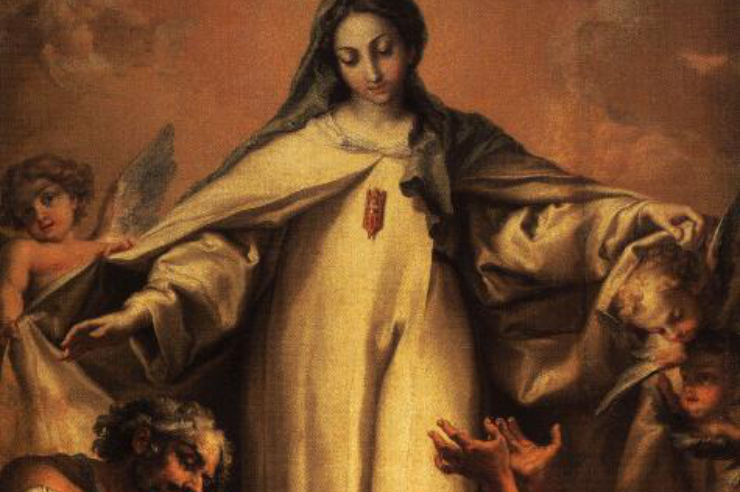There’s nothing quite like being in a hurry and seeing the flashing red lights that mean that a train is coming and that I have to stop. I had this happen to me recently when I was on my way from my mother-in-law’s house to town. It was at a train track that’s on a busy highway, in a place notorious for slow-moving trains.
I wasn’t in any kind of hurry, and I was feeling a little like sitting and reflecting in the rare silence of my car. Since my kids were with my mother-in-law, it was almost a retreat, being stopped at the train tracks like that.
Of course, I had a meeting to get to and it was possible I would be late.
But somehow I was able to let go of my desire to turn around and just sit and watch. Most of the people around me were turning around after barely stopping their cars; after the five or six minutes, I observed that I was the only original car left—I had started out five back and was now first in line as the last train car finally plodded past and the gates lifted.
It’s frustrating to sit and wait with no control over the situation.
Maybe that’s why so many of the cars around me chose to turn around within thirty seconds of stopping. It feels better to drive miles out of my way to the next crossing, betting on beating the train, than to bide my time in front of the monotony of clicking and rumbling.
It was only five minutes. I know because I watched my clock. I gave the train ten minutes to get past my crossing before I would turn around. Why use the gas? Why not just sit and enjoy the relative silence? Why not watch the cars around me to see if anyone else would do the same?
Though no one did, I’ll admit that I’m not the one who thought of this little exercise. I credit my husband with teaching me this lesson in learning patience. Once, we were stopped at the same crossing, and I asked him, annoyed, why we weren’t turning around and heading to another road.
“Why?” he replied. “It won’t be any faster, even if we wait here for ten minutes.”
He was right. (He usually is.) Because of the distance and the best way home, it was faster to sit and wait.
Since I struggle so mightily with this sort of lesson, it boggles my mind to think about the 13th century Christians and their resilience in the face of persecution. Here I am, using every bit of my inner strength to stay still at a train track, and they were being tormented in African prisons until they denied their faith. Many — most? — of them did not.
How did they do that? What gave them the fortitude and wherewithal to put up with the abuse and agony that must have been the delight of their captors? Do I have any chance at following their example?
As Our Lady of Mercy, also called Our Lady of Ransom, Mary gives me hope.
She gave courage to those prisoners in the 13th century too, appearing to Saint Peter Nolasco on August 1 in the white habit of the order he was to found, the Mercedarians. They were to be a symbol of her mercy, and their mission would be working to free the Christian captives and offer themselves as a ransom if it was needed.
Can you imagine what kind of bravery it took to become a Mercedarian in the thirteenth century, to know that you would be offering yourself to free others? It seems unlikely that an order with such a crazy-sounding mission would flourish, but it did, spreading rapidly and growing quickly.
The image of Our Lady of Mercy often shows her holding out a bag of coins as a symbol of the ransom she’s both asking and offering. How can giving up yourself be anything other than painful? It seems to defy modern reason.
Then again, if impatience is the sin of our generation, and confessor assures me it is, what can I offer as a ransom for my brothers and sisters? How can I give a part of myself to free them from their bondage to impatience? What would such a ransom look like; what does it involve; how does it change me?
It seems a stretch to compare my rest during a slow train and the Mercedarians’ offering of their lives to save others, but is it, really? Though I don’t have the same suffering or mandate the Mercedarians did, that doesn’t make my mission in life any less important, does it?
Maybe, in my car at the railroad tracks, I look over my strength and capability; maybe I can’t appreciate what I’m really capable of doing for another person or the importance of what I am doing for others in my life.
What about when I’m offering my time to children who need my help? What about when I forego the conversation I want to have with a friend and pursue, instead, a stranger’s child’s innocent request to be pushed on a nearby swing? What about when I swallow my disinclination to cooking and make a meal for a new mother?
What about when I’m offering my time to children who need my help? What about when I forego the conversation I want to have with a friend and pursue, instead, a stranger’s child’s innocent request to be pushed on a nearby swing? What about when I swallow my disinclination to cooking and make a meal for a new mother?
Or, closer to the heart, how about those times when I give up what I want to do and cheerfully embrace what someone else wants? Could I be showing them God’s love? Might I be a pale shadow of the ransom Mary had in mind when she appeared to Saint Peter Nolasco?
The beauty of Mary, Our Lady of Mercy, is that she doesn’t care.
She isn’t comparing what I’m doing with what the great heroes and martyrs of earlier ages did. She isn’t saying that one of us is better than the other. She doesn’t roll her eyes at my small attempts, implying that I should do more, more, more. Rather, she accepts me as I am and helps me take the small steps to where God would have me go.

















